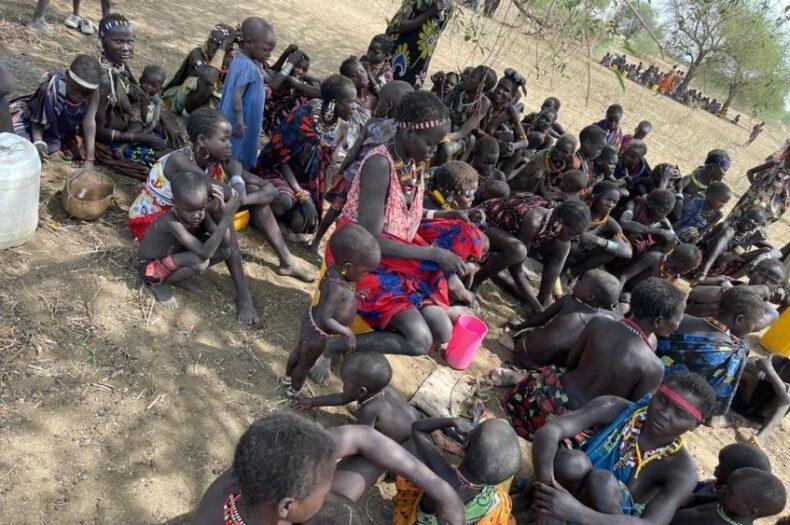Africa-Press – South-Sudan. About 7.1 million people in South Sudan are expected to suffer high levels of acute food insecurity between April and July 2024, according to the UN humanitarian agency.
UN Office for Coordination of Humanitarian Affairs (OCHA) added that about 79,000 people are at risk of catastrophic level of hunger, mostly in areas affected by climate related shocks, economic crisis and conflict.
In June 2023, the Integrated Food Security Phase Classification projected that at least 5.8 million people were to experience high levels of acute food insecurity classified as IPC Phase 3 between September to November that year.
It was further said an estimated 35,000 people were in IPC Phase 5, which is the catastrophe phase, in the Duk and Nyirol counties of Jonglei State, Rubkona County of Unity State, including 14,000 South Sudanese returnees.
South Sudan’s currency depreciation has caused severe hunger for around 6 million people between December 2023 and March 2024 as food prices rise by 19 percent in the country, said the agency.
The pound currency started to drastically weaken against the United States dollar since February this year, triggering a sharp increase in commodity prices across the country.
The situation is blamed on dwindling revenue due to the impact of the war in Sudan and the Red Sea blockade on the country’s precious oil export.
This has induced economic hardships that leave the government struggling to pay civil servants salaries, as the public workforce goes for seven months without its dues.
OCHA further noted that 656,000 people have been registered arriving in South Sudan from Sudan, a year after a ferocious civil war erupted there – with an average of about 1,800 people daily crossing into the country.
“This influx of returnees and refugees continues to put additional pressure on limited services at border points and areas of destination,” the agency said in its April Humanitarian Snapshot.
It further said about 26,000 people were reported as displaced due to intercommunal violence between conflicting communities in Tambura County, Western Equatoria State.
Most residential areas around Tambura town were reported deserted, the agency added.
Meanwhile, OCHA said attacks by “armed youth from the Greater Pibor Administrative Area” in cattle camps in Kauto payam in Eastern Equatoria State displaced some 6,500 people, resulting in numerous deaths, abduction and theft of cattle.
Further fighting between armed groups in Minga, Mundri East County in Western Equatoria, displaced nearly 7,000 people to Rokon in Juba County of Central Equatoria State, according to OCHA.
For More News And Analysis About South-Sudan Follow Africa-Press






